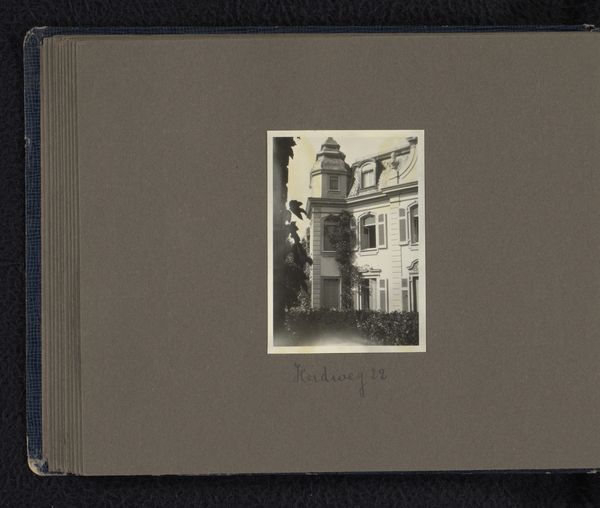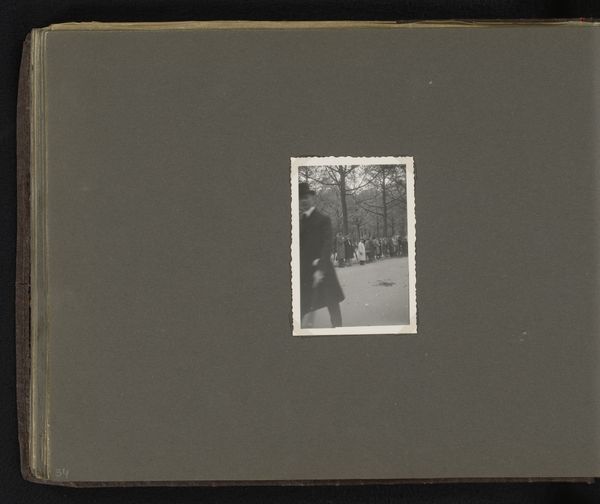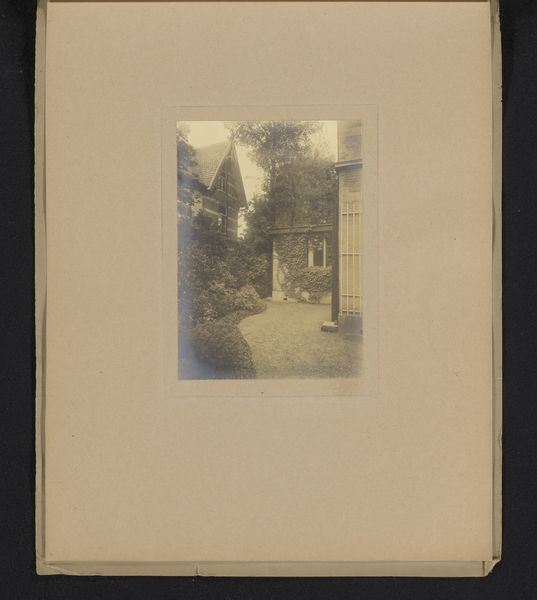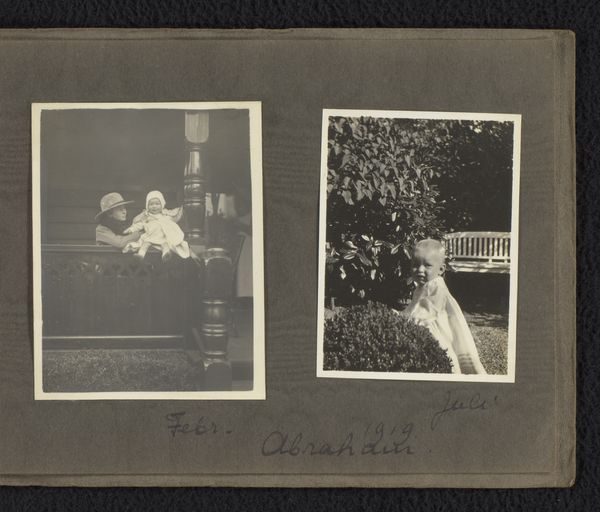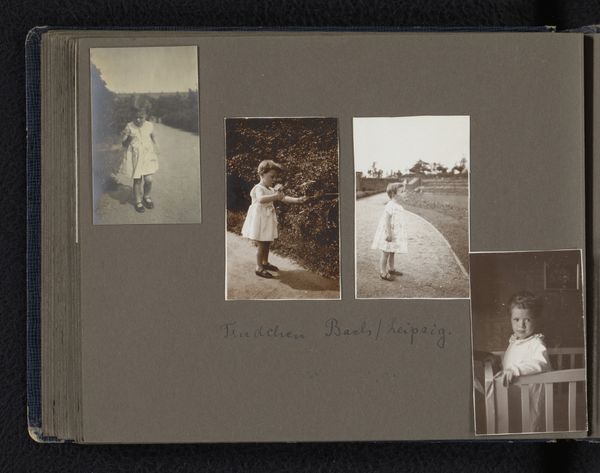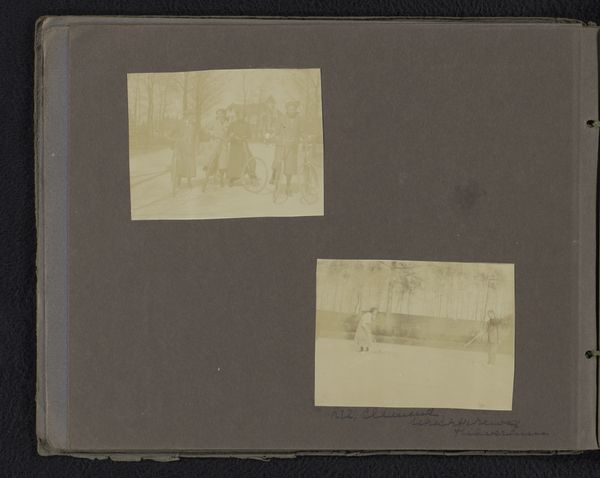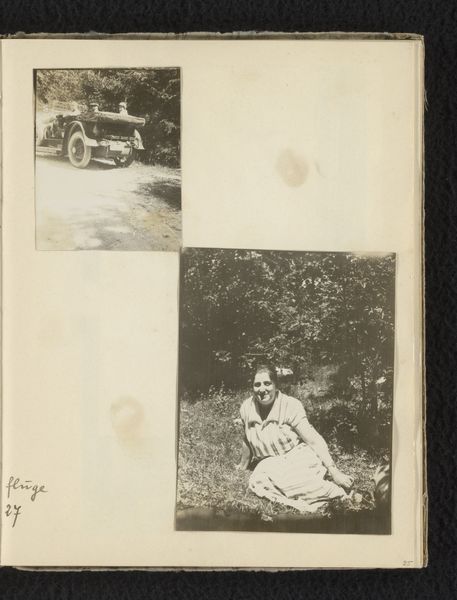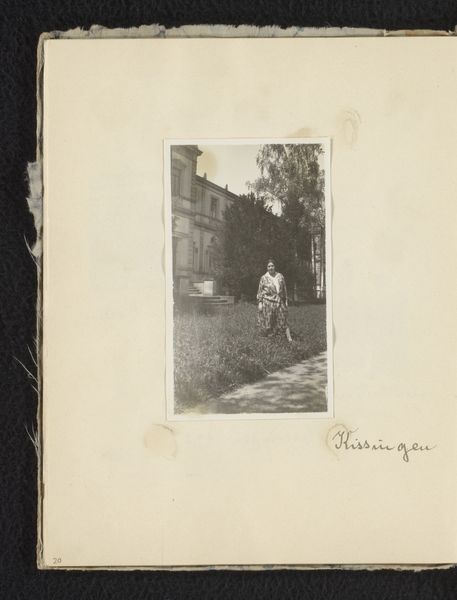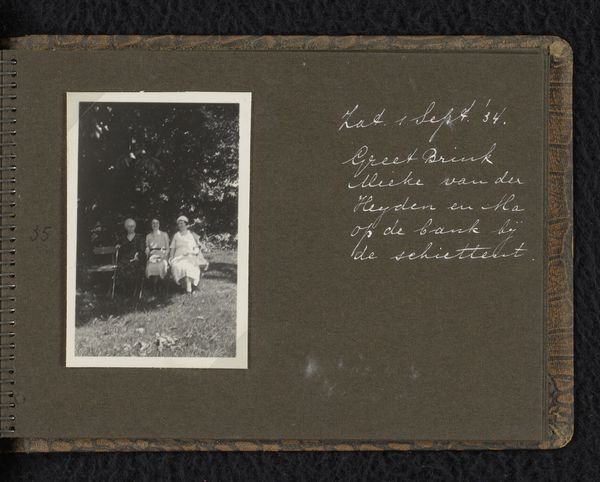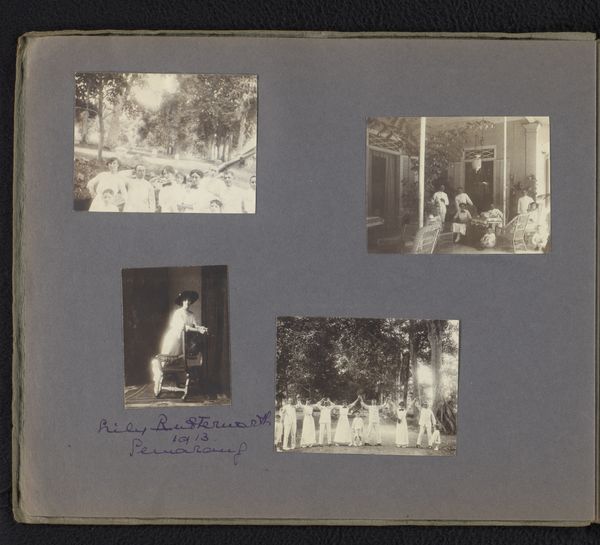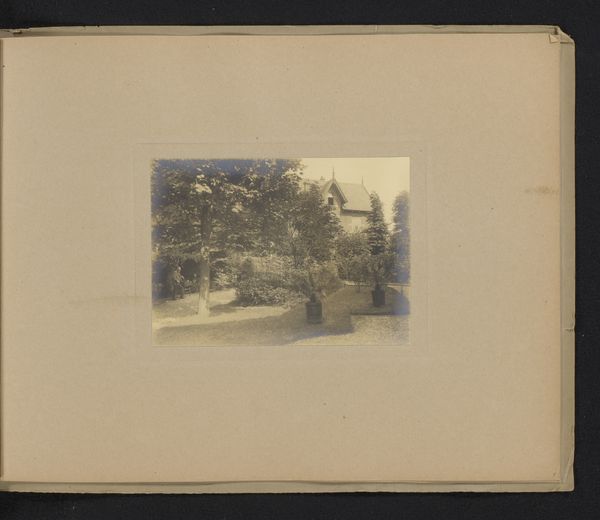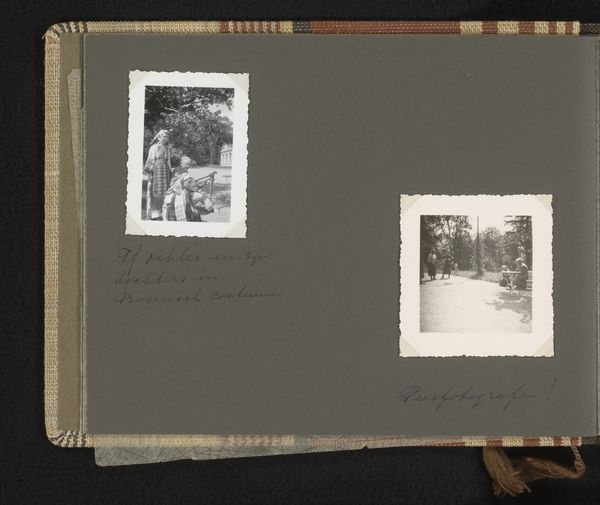
Isabel Wachenheimer wandelt met parasol door de Hofgarten, september 1932, München/Baden-Baden? 1932 - 1939
0:00
0:00
photography
#
portrait
#
aged paper
#
toned paper
#
homemade paper
#
pale palette
#
reduced colour palette
#
muted colour palette
#
landscape
#
white palette
#
photography
#
personal sketchbook
#
sketchbook art
#
limited palette
#
realism
Dimensions: height 105 mm, width 135 mm, height 165 mm, width 235 mm
Copyright: Rijks Museum: Open Domain
Curator: This striking black and white photograph captures Isabel Wachenheimer with a parasol, wandering through the Hofgarten in September 1932, likely taken in either Munich or Baden-Baden. It appears to come from a family album. Editor: The muted tones create such a nostalgic feeling. It’s delicate and peaceful, with that hazy quality we often associate with old photographs. Curator: Indeed. I find it fascinating when considering its production context. The type of camera available then, the process of developing the photograph, the very act of preserving a family memory... These considerations speak volumes about the culture of photography at the time, don't you agree? And how such personal, domestic moments were captured and archived within the family dynamic and memory. Editor: Absolutely, the tangible object itself tells a story. However, look at how the light falls, the way her figure is placed off-center, drawing our eye to the scene behind her. It uses asymmetry effectively, lending the scene dynamism. And the delicate edging of the photo itself enhances this nostalgic feeling. Curator: The parasol's intricate design, though likely commercially produced, reflects the available consumer goods. And let’s not forget the backdrop of the Hofgarten itself. Who were the laborers maintaining that space, creating a stage for leisure activities among the growing unease as the Nazi party rose to prominence. It begs so many questions. The choices made of documenting everyday lives, preserving memories of better days that must be further explored. Editor: A sharp contrast. The photo provides a visual tension through juxtaposition that enhances its emotive effect. I agree, thinking about these complex socio-historical forces does deepen its reading and creates rich interplay between what is present and known in this captured, framed instance. Curator: Ultimately, examining this image helps us comprehend how photography as a developing mass media reshaped self-perception during a rapidly changing era, right at the verge of the Nazi regime and looming horrors and tragedies of lost loved ones in a seemingly ‘normal’ summer stroll. Editor: And by delving into both form and context, we gain a far deeper understanding, seeing how artistic and historical perspectives intricately enhance and inform each other. It is after all, not just an image, but an embodiment of those bygone days.
Comments
No comments
Be the first to comment and join the conversation on the ultimate creative platform.
